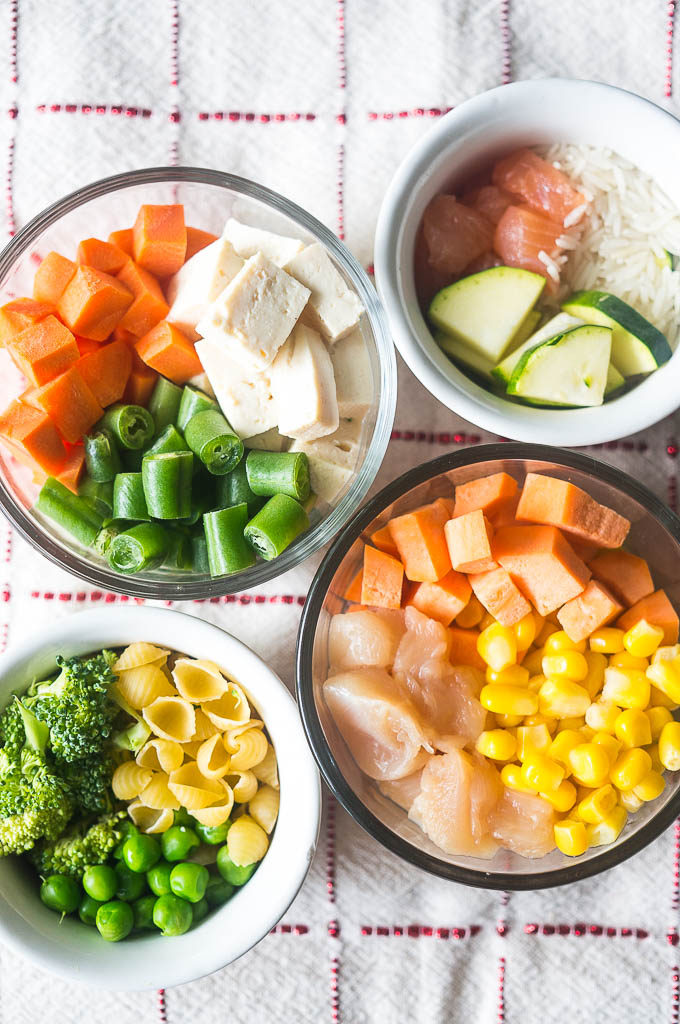
Homemade Baby Food: A Comprehensive Guide to Nourishing Your Little One
Introduction
As a new parent, providing your baby with the best possible nutrition is paramount. Homemade baby food offers a myriad of benefits, including control over ingredients, freshness, and customization to meet your baby’s specific needs. This comprehensive guide will empower you with the knowledge and techniques to create nutritious and delectable homemade baby food that will support your child’s growth and development.
Benefits of Homemade Baby Food
- Control over ingredients: You can select organic, fresh, and unprocessed ingredients, ensuring your baby consumes only the highest quality foods.
- Freshness: Homemade baby food is made fresh, eliminating the risk of preservatives or additives found in commercial products.
- Customization: You can tailor the flavors, textures, and nutrient content to suit your baby’s preferences and dietary requirements.
- Cost-effective: Making baby food at home can be significantly more economical than purchasing pre-packaged options.
- Bonding experience: Preparing baby food together can be a bonding experience, fostering a love for healthy eating from an early age.
Getting Started
Equipment:
- Blender or food processor
- Steamer or boiling pot
- Ice cube trays or freezer-safe containers
- Spatula or spoon
Ingredients:
- Fresh fruits and vegetables
- Lean meats
- Whole grains
- Legumes
- Dairy products (after 6 months)
Safety Precautions:
- Wash your hands and all equipment thoroughly before handling food.
- Use only ripe, fresh produce.
- Cook meats thoroughly to an internal temperature of 165°F (74°C).
- Puree foods until smooth to prevent choking hazards.
- Store homemade baby food properly in the refrigerator or freezer.
Pureeing Techniques
- Blender: Puree fruits, vegetables, and cooked meats in a blender until smooth.
- Food processor: Use the food processor’s puree attachment to achieve a finer texture.
- Mashing: Use a fork or potato masher to mash cooked fruits, vegetables, and meats.
Introducing Solids
- Start introducing solids around 4-6 months of age, as recommended by your pediatrician.
- Begin with single-ingredient purees, such as sweet potatoes, applesauce, or avocado.
- Gradually introduce new foods and textures, monitoring your baby’s reactions for any allergies or sensitivities.
Storing Homemade Baby Food
- Refrigerator: Store pureed baby food in airtight containers in the refrigerator for up to 3 days.
- Freezer: Freeze pureed baby food in ice cube trays or freezer-safe containers for up to 3 months. Thaw before serving.
Recipes for Homemade Baby Food
Fruit Purees:
- Apple Puree: Peel, core, and steam apples until soft. Puree until smooth.
- Banana Puree: Mash ripe bananas with a fork or spoon.
- Blueberry Puree: Steam blueberries until soft. Puree until smooth.
Vegetable Purees:
- Sweet Potato Puree: Peel and cube sweet potatoes. Steam until soft. Puree until smooth.
- Carrot Puree: Peel and chop carrots. Steam until soft. Puree until smooth.
- Broccoli Puree: Steam broccoli florets until soft. Puree until smooth.
Meat Purees:
- Chicken Puree: Boil or steam boneless, skinless chicken breasts until cooked through. Puree until smooth.
- Turkey Puree: Roast or boil ground turkey until cooked through. Puree until smooth.
- Salmon Puree: Steam salmon fillets until cooked through. Remove skin and bones. Puree until smooth.
Grain Purees:
- Oatmeal Puree: Cook rolled oats in water or milk until soft. Puree until smooth.
- Brown Rice Puree: Cook brown rice in water until soft. Puree until smooth.
- Quinoa Puree: Cook quinoa in water until soft. Puree until smooth.
Combination Purees:
- Apple-Cinnamon Puree: Combine applesauce with a sprinkle of cinnamon.
- Banana-Blueberry Puree: Combine mashed banana with blueberry puree.
- Chicken-Sweet Potato Puree: Combine chicken puree with sweet potato puree.
Conclusion
Homemade baby food is a nutritious and rewarding way to nourish your little one. By following the guidelines and recipes provided in this guide, you can create delicious and wholesome meals that will support your baby’s growth and development. Remember to consult with your pediatrician for personalized advice and to address any specific dietary concerns. Enjoy the bonding experience and the satisfaction of providing your baby with the best possible nutrition.
